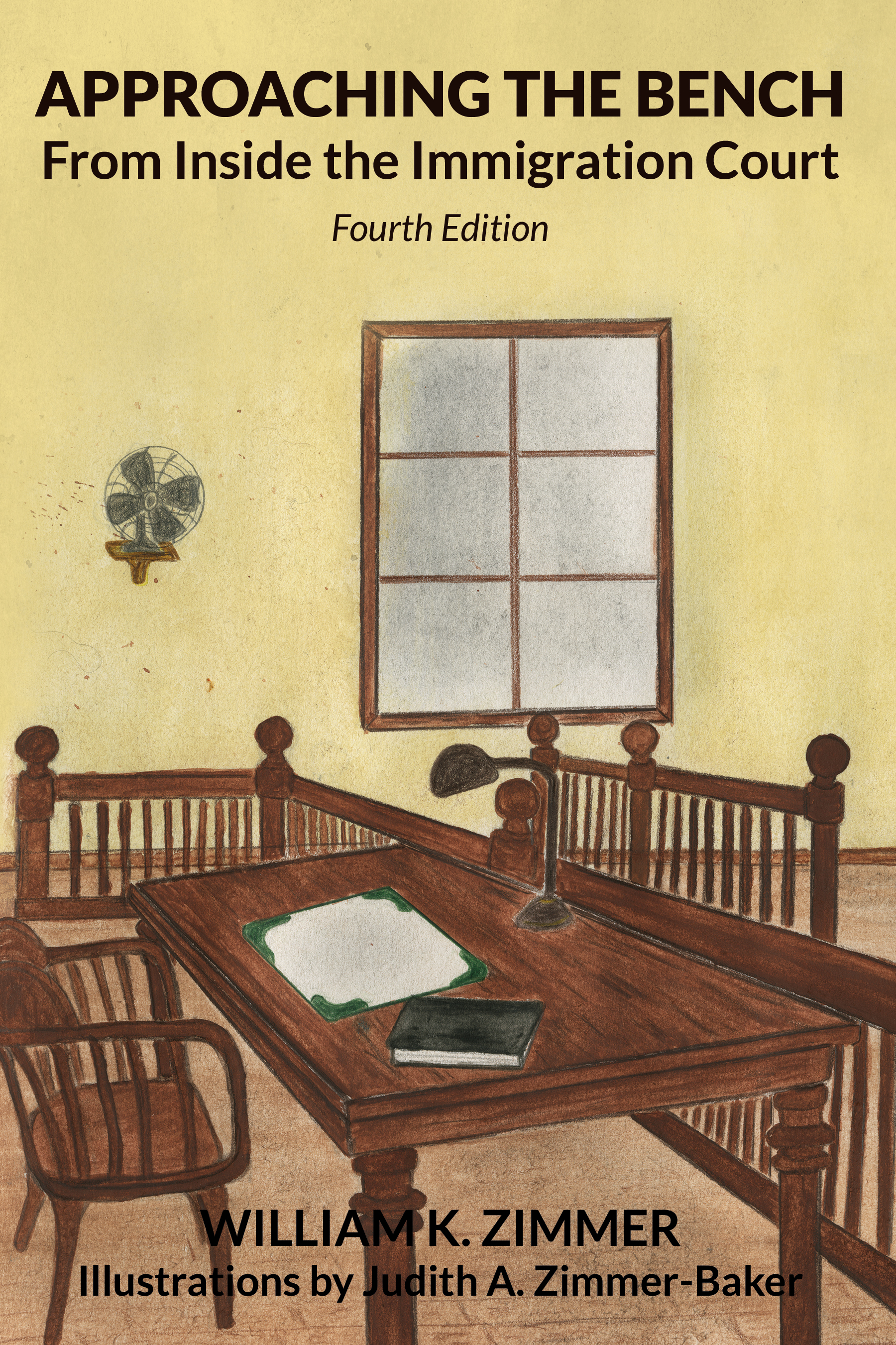What You Don’t Need to Know About Aggravated Felonies

Executing the protocol for classifying offenses (most of which are prosecuted under State law) as aggravated felonies under federal law is one of the many challenging tasks that immigration lawyers and judges must undertake. Lawyers who defend individuals in immigration proceedings seem to enjoy this task more than government lawyers and judges because the task can be confusing which is usually good for clients. Occasionally, there seems to be no way to cut through what sometimes takes on the unsolvable quality of the famous Gordian knot. Unfortunately, Alexander the Great’s approach literally won’t cut it.
The hypothetical method for classifying aggravated felonies is not the first or only example of baffling immigration law complexity. Chief Judge Irving R. Kaufman placed immigration law in the same dubious category as tax law with this opening comment in one of his appellate decisions:
We have had occasion to note the striking resemblance between some of the laws we are called upon to interpret and King Minos's labyrinth in ancient Crete. The Tax Laws and the Immigration and Nationality Acts are examples we have cited of Congress's ingenuity in passing statutes certain to accelerate the aging process of judges.
See Lok v. Immigration and Naturalization Service, 548 F.2d 37 (2nd Cir. 1977).
The manner in which the elements of a State offense are identified for comparison to a generic federal offense described in the aggravated felony definition for the purpose of matching the State offense with a generic federal offense, thereby classifying it as an aggravated felony, has evolved in case law (i.e. court decisions). The first administrative decision that authorized this comparison approach to classify State offenses as aggravated felonies is Matter of Barrett, 20 I&N Dec. 171 (1990).
The evolution of the comparison method of classification approved in Matter of Barrett ultimately centered on what documents or sources can be used to identify the "elements" of an offense for which a person in immigration proceedings had been convicted. Real facts, however, were not ignored, as long as they existed in the record of criminal proceedings and constituted "elements" of the offense. Matter of Barrett, at 174. The Board of Immigration Appeals ("BIA") in Matter of Barrett focused on the meaning of "punishable under" 18 U.S.C. § 924(c)(2) which defines "drug trafficking crime" in the context of the Controlled Substances Act (“CSA”). Ultimately, the BIA approved a comparative approach that allowed a court to examine the facts to determine whether the conduct of an alien convicted for a State offense amounts to an offense "punishable under" the CSA. Matter of Barrett, at 177.
Now it seems appropriate to introduce the terms, “categorical approach” and “modified categorical approach.” These terms refer to the current procedure used for comparing an offense for which an alien has been convicted to the generic federal offense in or referenced in the definition of aggravated felony.
The categorical approach describes a direct comparison of the statutory definition of an offense to the statutory elements of the generic federal offense or federal offense referenced in the aggravated felony definition. If all of the elements of the offense under consideration match each of the elements in the generic federal offense or federal offense referenced in the aggravated felony definition there is no need for further inquiry. The offense under consideration must be an aggravated felony according to basic inductive logic. Taylor v. United States, 495 U.S. 575 (1990) (“The sentencing court must generally adopt a formal categorical approach . . . looking only to the fact of conviction and the statutory definition of the predicate offense, rather than to the particular underlying facts.”).
Taylor v. United States involved the application of sentencing guidelines in United States District Court. It serves, however, as guidance for application of the categorical approach in immigration proceedings. The United States Supreme Court further reiterated that, under the categorical approach, courts “focus solely on whether the elements of the crime of conviction sufficiently match the elements of [the] generic [crime], while ignoring the particular facts of the case.” Mathis v. United States, 136 S. Ct. 2243, at 2248 (2016).
Obviously, the Matter of Barrett comparative approach that permitted consideration of real facts of the commission of a crime is no longer applicable. To put the changed approach in a nut shell, the aggravated felony classification method has evolved from comparing elements of a crime arising from behavior that violated a statute to the current method of comparing textual elements of a violated statute to the textual elements of a generic federal statute.
On July 16, 2021, the Fifth Circuit Court of Appeal published a decision that illustrates how the decision in Mathis v. United States resulted in the change of the Government’s removal charge resulting in denial of relief for the petitioner. Arturo Ochoa-Salgado v. Merrick Garland (5th Cir. 2021) No. 19-60519.
The procedural history, facts of record, holding and rationale in Arturo Ochoa-Salgado v. Merrick Garland, (5th Cir. July 16, 2021) No. 19-60519 are as follows:
Case History
In 2013, the Department of Homeland Security initiated removal proceedings, which occurred in two parts: 1) proceedings that occurred before Mathis v. United States, 136 S. Ct. 2243 (2016), and 2) post-Mathis proceedings.
Upon considering the Petitioner’s first petition, the Fifth Circuit Court of Appeal remanded for the BIA to review the record of proceedings in the light of new law (i.e. Mathis v. United States).
After remand, the government changed position, switching to reliance on a categorical classification method, and claimed that § 481.112 of the Texas Health and Safety Code which classifies “offer to sell” a controlled substance as a means of delivery of a controlled substance falls within the CSA.
Ultimately, the Immigration Judge determined that a conviction under Texas law for delivery of a controlled substance is an aggravated felony and the Petitioner is subject to removal under section 237(a)(2)(A)(iii) of the Immigration and Nationality Act, as amended (“the Act”).
Since conviction for an aggravated felony disqualified the Petitioner for cancellation of removal under section 240A(a) of the Act, the Immigration Judge denied the respondent’s application for cancellation of removal as a lawful permanent resident.
The BIA agreed that “the conduct necessary to prove that an ‘offer to sell’ was made . . . qualifies as a felony under the CSA” and affirmed the Immigration Judge’s decision.
Facts
The Petitioner is a Mexican citizen whom the United States admitted as a lawful permanent resident alien.
In 2008, he was convicted in Texas of manufacture or delivery of cocaine in violation of Texas Health and Safety Code § 481.112.
Before Mathis v. United States was decided, the Government had charged the respondent under section 237(a)(2)(A)(iii) of the Act (i.e. alleged conviction for an aggravated felony). Not being restrained by a hypothetical approach, the Government had no difficulty proving actual delivery of cocaine based on the facts in the record of conviction (e.g. the indictment underlying the Petitioner’s conviction).
The Government, however, had conceded in a previous sentencing guideline case (not related to immigration law, but in which the appellate court had used a hypothetical categorical classification approach) that delivery of cocaine under Texas law was not an aggravated felony. See Vasquez-Martinez v. Holder, 564 F.3d 712, at 718 (5th Cir. 2009).
The Government, fearing that it could not refer to the facts in the record of conviction to demonstrate actual delivery of cocaine, substituted section 237(a)(2)(B)(i) of the Act, a more general removal charge (i.e. “[a]ny alien who at any time after admission has been convicted of a violation of . . . any law or regulation of a State, the United States, or a foreign country relating to a controlled substance . . .”), to which the Petitioner conceded.
However, without a finding that the Petitioner had been convicted of an aggravated felony, the Petitioner remained eligible to apply for cancellation of removal under section 240A(a) of the Act. Aliens convicted of an aggravated felony are not eligible for cancellation of removal. See section 240A(a)(3) of the Act.
After the Mathis v. United States decision, on remand, the Government decided to roll the dice and again charge the Petitioner under section 237(a)(2)(A)(iii) of the Act (which if sustained would disqualify the Petitioner for cancellation of removal).
In particular, the Government’s ultimate position became that “offer to sell” a controlled substance under the Texas statute was the equivalent to an “attempted transfer” of a controlled substance under the CSA, which means that the element of “delivery” under Texas law is equivalent to the element of “distribution” under the CSA.
Held
Petition for review DENIED (in favor of the Government)
Rationale
The Fifth Circuit Court of Appeal reasoned that:
- “Delivery,” under § 481.112 of the Texas Health and Safety Code, can occur through (1) actual transfer, (2) constructive transfer, or (3) an offer to sell.
- The CSA makes it unlawful for “any person knowingly or intentionally . . . to . . . distribute . . . a controlled substance.” § 841(a)(1) [emphasis added]. “Distribute,” in turn, “means to deliver . . . a controlled substance.” § 802(11) [emphasis added]. “Deliver” includes the “attempted transfer of a controlled substance.” § 802(8) [emphasis added].
- To establish attempt, “the government must prove (1) that the defendant[] acted with the kind of culpability required for the crime . . . and (2) that the defendant[] engaged in conduct constituting a substantial step toward commission of the crime.”
- § 481.112 of the Texas Health and Safety Code’s “offer to sell” theory requires (1) the requisite culpability and (2) a substantial step.
- First, the CSA prohibits intentional distribution. § 841(a)(1). Intent to distribute is therefore the requisite mens rea (i.e. state of mind required for criminal culpability).
- Second, to show a substantial step, the government must prove an act that is “strongly corroborative of the actor’s criminal purpose.” United States v. Hernandez-Galvan, 632 F.3d 192, at 198 (5th Cir. 2011).
- Therefore, an “offer to sell” under § 481.112 of the Texas Health and Safety Code constitutes attempted delivery under the CSA in accordance with the CSA’s definition of an attempted transfer.
See Arturo Ochoa-Salgado v. Merrick Garland, at 9-12 (5th Cir. July 16, 2021) No. 19-60519.
Commentary
In Arturo Ochoa-Salgado v. Merrick Garland, the Fifth Circuit Court of Appeal solely applied the categorical aggravated felony classification method. Thus, the real facts of actual delivery of cocaine which constituted the offense for which the Petitioner had been convicted were ignored in favor of reviewing hypothetical facts consisting of the minimal culpable acts necessary to commit the offense derived from statute, as opposed to the record of conviction.
No controversy was raised by the parties about whether the modified categorical approach should have been utilized.
If an offense under review for comparison to a generic federal offense consists of only one set of elements needed to prove its commission the offense is deemed indivisible and the modified categorical classification approach cannot be utilized. Descamps v. United States, 559 U. S. 133 (2013) (“The modified categorical approach does not apply to statutes . . . that contain a single, indivisible set of elements.”).
Sometimes the State offense is broader in scope with regard to its elements than the generic federal offense or offense referenced in the aggravated felony definition. In this circumstance, lawyers and judges must determine whether a realistic probability exists that the minimum criminal conduct punished under the statute would be subject to prosecution in the jurisdiction where the offense is defined. Moncrieffe v. Holder, 133 S. Ct. 1678, at 1684-85 (2013). A review of case law in the State where the conviction occurred will be necessary to determine if an example of prosecution for such minimum criminal conduct exists.
Before resorting to a modified categorical approach, a distinction must be made between elements of an offense (which must be proven beyond a reasonable doubt) and the means of committing the offense (for which proof is not necessary to obtain a conviction, but might appear in the criminal statute). Referring to Mathis, the BIA acknowledged that “the divisibility of a State statute depends on whether State law establishes that statutory alternatives are discrete ‘elements’ or alternative ‘means’ of committing an offense. Mathis v. United States, 136 S. Ct. at 2256.” Matter of Chairez-Castrejon, 27 I&N Dec. 21 (BIA 2017). The determination of whether parts of a State statute are “elements” or “means” typically involves a review of case law in the State where the conviction occurred.
In short, an “element” of an offense must be proven beyond a reasonable doubt to obtain a conviction. Whereas, the “means” of committing an offense is the way in which an offense is committed that need not be proven to obtain a conviction.
For example, referring to the law under review in Arturo Ochoa-Salgado v. Merrick Garland, the alternative means of committing delivery of a controlled substance under Texas law are: 1) actual transfer, 2) constructive transfer, or 3) an offer to sell. See § 481.112 of the Texas Health and Safety Code. The punishment for delivery of a controlled substance in Texas remains the same regardless of the means by which the offense is committed. However, a different punishment range applies if the element of the offense changes from “delivery” to “possession.” See § 481.115 of the Texas Health and Safety Code.
Once State offenses under consideration are deemed divisible, lawyers and judges can resort to the modified categorical approach. This opens the door to review of indictments, jury instructions, plea colloquies, and plea agreements.
Perhaps, it is becoming obvious, even to those readers who harbor reservations about Chief Judge Kaufman’s opinion, that application of the aggravated felony definition under 101(a)(43) of the Act is anything but clear or simple.
Here is an example of the hazy fog that can arise without warning from categorical and modified categorical methods for classifying aggravated felonies to baffle the most wary and sagacious adjudicator. Rape which is an aggravated felony under section 101(a)(43)(A) of the Act is not defined in any federal statute that can serve as a generic federal offense for comparison to a State offense. The BIA wrestled its way out of this predicament with the invention of an imaginary generic federal rape offense by defining “rape” according to its “ordinary, contemporary meaning” in 1996, when “rape” was added to section 101(a)(43)(A) of the Act. Matter of Keeley, 27 I&N Dec. 146 (BIA 2017). See, also, Matter of Alvarado, 26 I&N Dec. 895, at 897 (BIA 2016) (finding “it appropriate to adopt a generic definition [of a crime] based on how [it] was commonly defined” when section 101(a)(43) of the Act was enacted). This creative and imaginary patch to the aggravated felony classification procedure blends easily with the categorical and modified categorical approaches because it also appears as clear as mud.
Perhaps, Congress should give some thought to repealing the aggravated felony definition. Congress could then more efficiently achieve the same purposes that motivated enactment of the aggravated felony legislation in the first place.
For example, the same results could be realized by providing that any alien sentenced to 7 years or more (or any number of years Congress deems appropriate) upon conviction for any nonpolitical crime is subject to removal and barred from relief applications in the same way as persons convicted for what is now known as an “aggravated felony.”
This sort of disabling provision would simplify application of the law by eliminating the need to compare State offenses to generic (and sometimes nonexistent) federal offenses. However, I am more of a carpenter than an architect - Nor am I an academic; just another voice in the peanut gallery.
It sometimes seems futile to attempt persuasion of law makers and policy makers who live in a visionary world of ideas, aspirations and politics remote from the real world to consider the practicalities of application when drafting legislation. Thus, as noted by Judge Kaufman, Congress continues the practice of "passing statutes certain to accelerate the aging process of judges."

